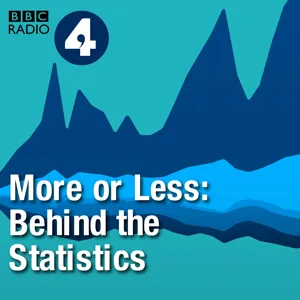Podcast Summary
Leveraging LinkedIn for Hiring and Importance of Data Journalism: LinkedIn is a valuable resource for small businesses to find professionals, as 70% of users aren't on other job sites. Data journalism and fact-checking are crucial to avoid spreading misinformation.
LinkedIn is an essential platform for small businesses looking to hire professionals. With over 70% of LinkedIn users not visiting other leading job sites, it's like looking for your car keys in a fish tank if you're not using LinkedIn to find talent. The platform allows businesses to access a pool of professionals who might not be actively searching for a new job but could be open to the perfect role. Additionally, the discussion highlighted the importance of data journalism and fact-checking, as demonstrated by the investigation into claims about the number of Indians going to sleep hungry and the number of children who died due to malnutrition. These claims were traced back to a piece of litigation, emphasizing the importance of verifying sources before sharing information. Lastly, the podcast promoted deals from Burrow, a furniture company, offering discounts on their timeless and durable outdoor collection.
Hunger data in India: Reliability in question: The number of hungry people in India, widely reported in media, lacks reliable sources. The most trusted data comes from the Global Hunger Index, but it's based on old consumption data and a poll of 3,000 people.
The reported number of hungry people in India, which has been widely circulated in the media, may not be accurate. The number, which is said to have come from a petition in the Indian courts, has not been sourced reliably and there is doubt about its accuracy. The most reliable data on hunger and malnutrition in India comes from the Global Hunger Index, which is compiled by the UN's Food and Agriculture Organization (FAO). According to the FAO, the number of undernourished people in India rose from approximately 200 million in 2018 to 224 million in 2020. This increase can be attributed to factors such as food availability and distribution. However, it is important to note that the data on consumption at the population level in India is over 10 years old, and the FAO has had to rely on an opinion poll conducted by Gallup to estimate the number of people experiencing food insecurity. This poll, which only surveyed 3,000 people, may not be representative of the entire population. Therefore, while the issue of hunger and malnutrition in India is a significant one, it is important to be cautious about relying on specific numbers without reliable sources.
Measuring Hunger in India with Phone Surveys: Phone surveys, like the one conducted by Gallup, may not accurately measure hunger in India compared to larger, yearly surveys like those conducted by USAID. However, available data shows improvements in food indicators over the years.
While there may be more food and calories available in India, there are concerns that not everyone is getting enough to eat based on a phone survey. However, it's important to note that a small phone survey by Gallup may not be the most accurate way to measure hunger in India, especially when compared to larger, yearly surveys like the demographic and health surveys conducted by USAID in over 150 developing countries. These surveys track indicators such as being underweight, stunted growth, and low weight for age or height, and data from India shows improvements across all groups over the years. While there is still inequality in food distribution and malnutrition is a problem with deadly consequences, the argument that things have worsened in India in recent years is difficult to make based on available data.
More than 60% of child deaths under 5 caused by malnutrition: Despite a decrease in child mortality rates, malnutrition remains a leading cause of child deaths in India, with over 60% of under-5 deaths attributed to it. India's economic growth and development efforts should prioritize addressing this issue to save more lives.
Malnutrition was the underlying cause of approximately two-thirds of deaths in children under the age of 5 in the past few decades, according to a study published in The Lancet. This trend has persisted despite a significant decrease in child mortality rates in India, which fell from 2,336 per 100,000 in 1990 to 801 in 2017. While malnutrition remains a concern, the numbers do not suggest that the situation has worsened. However, given India's economic growth and commitment to development for all, some argue that the number of child deaths attributable to malnutrition should be decreasing at a faster rate, particularly for the poor. The claim that more than two-thirds of under-5 child deaths were caused by malnutrition in the most recent year is difficult to verify definitively, but the trend identified in the study remains a significant concern.
New BBC podcast provides in-depth analysis of world's big stories: The Explanation podcast offers honest explanations of global issues and events, helping listeners understand complex topics
The BBC World Service has launched a new podcast called The Explanation, which aims to provide in-depth analysis and honest explanations of the world's big stories. The podcast will cover both long-running issues and the latest global events, helping listeners make sense of complex topics. To learn more and listen, search for The Explanation on your preferred BBC podcast platform. Additionally, this Mother's Day, consider giving back to the special moms in your life with gifts and savings from 1-800-Flowers. A fun fact shared during the broadcast is that crocodiles cannot stick out their tongues. Lastly, UnitedHealthcare offers short-term health insurance plans for flexible, budget-friendly coverage.



